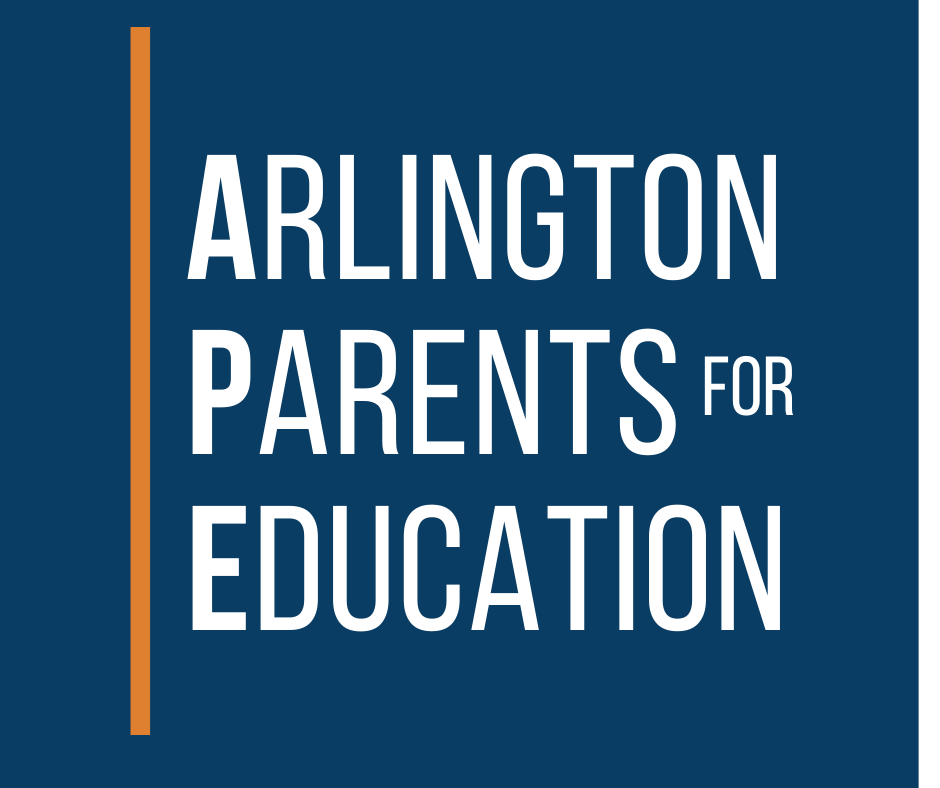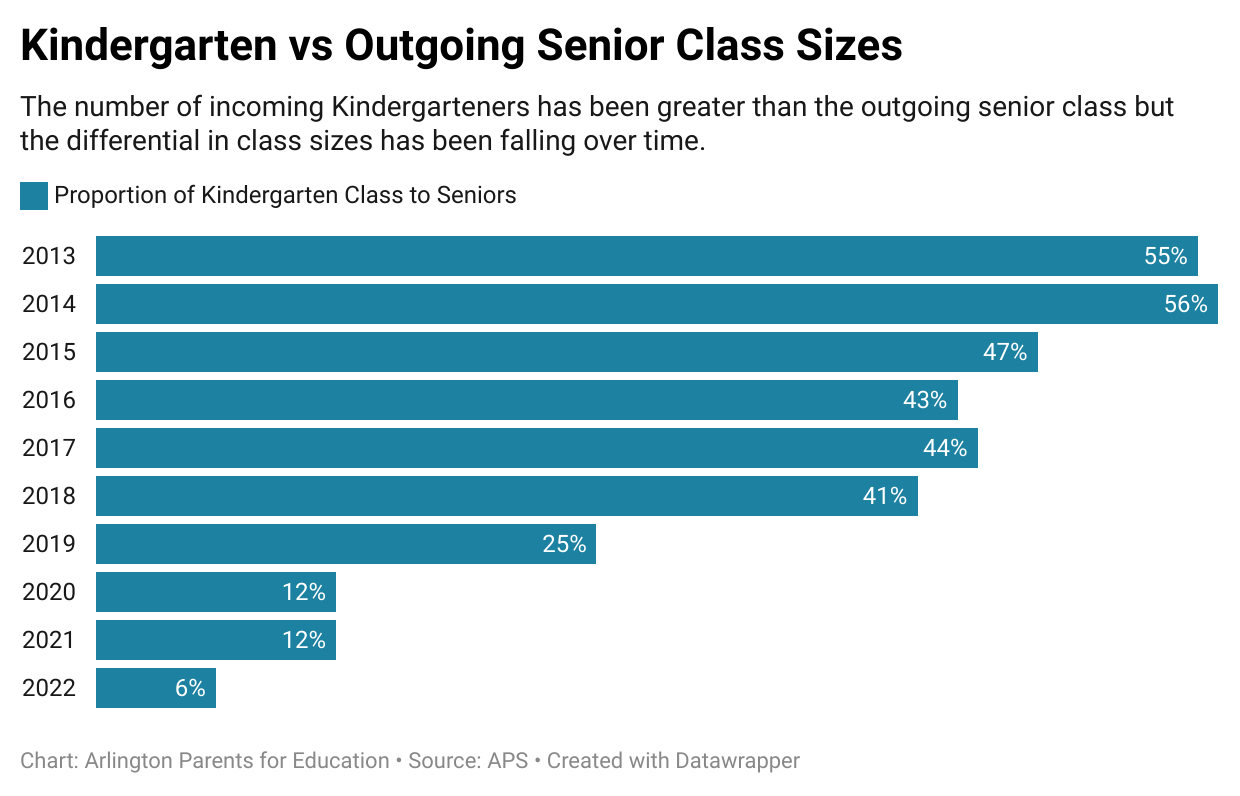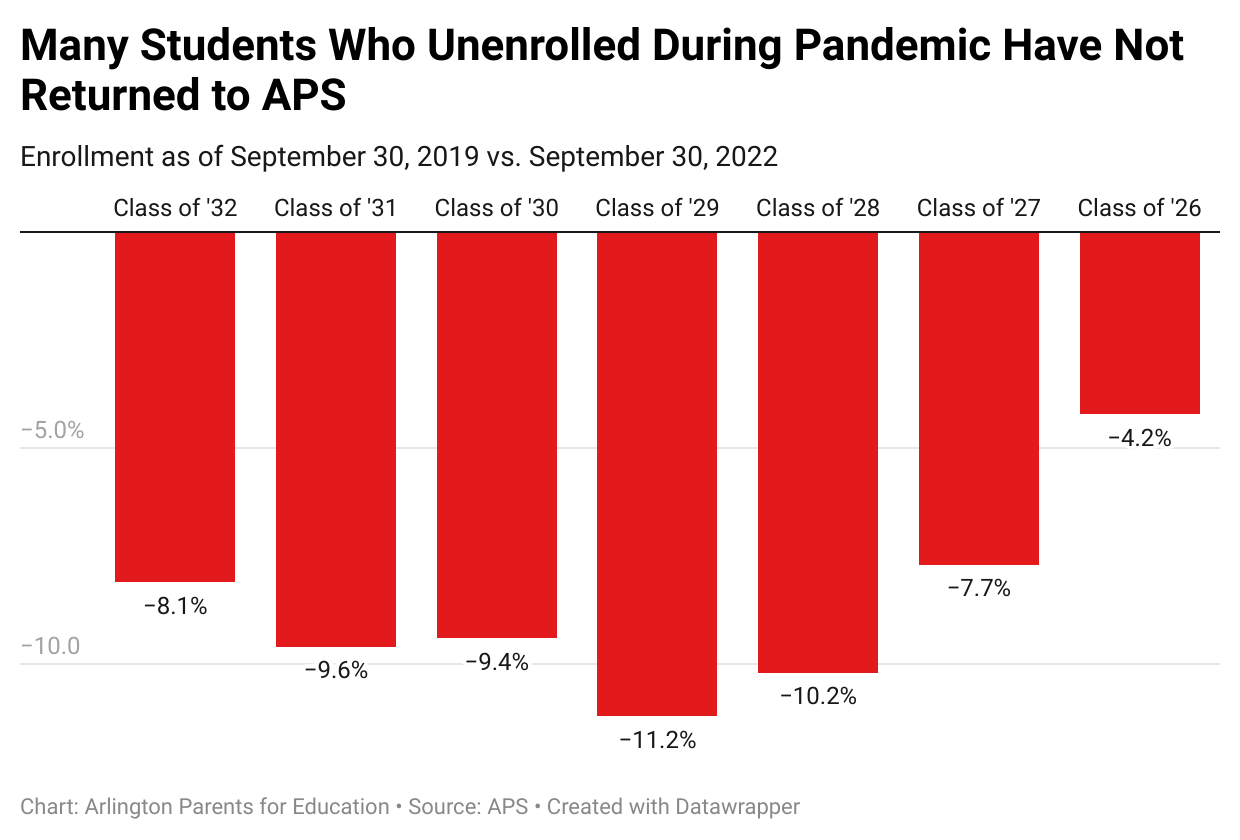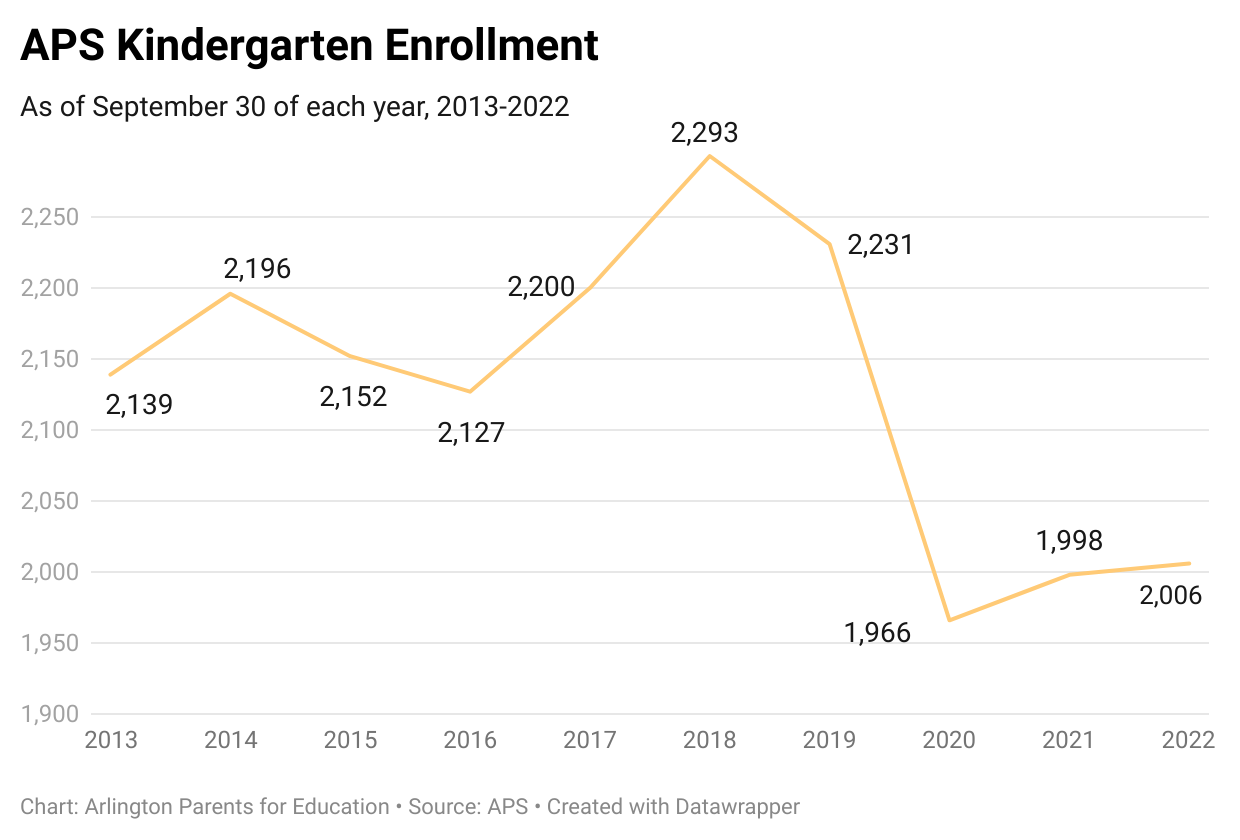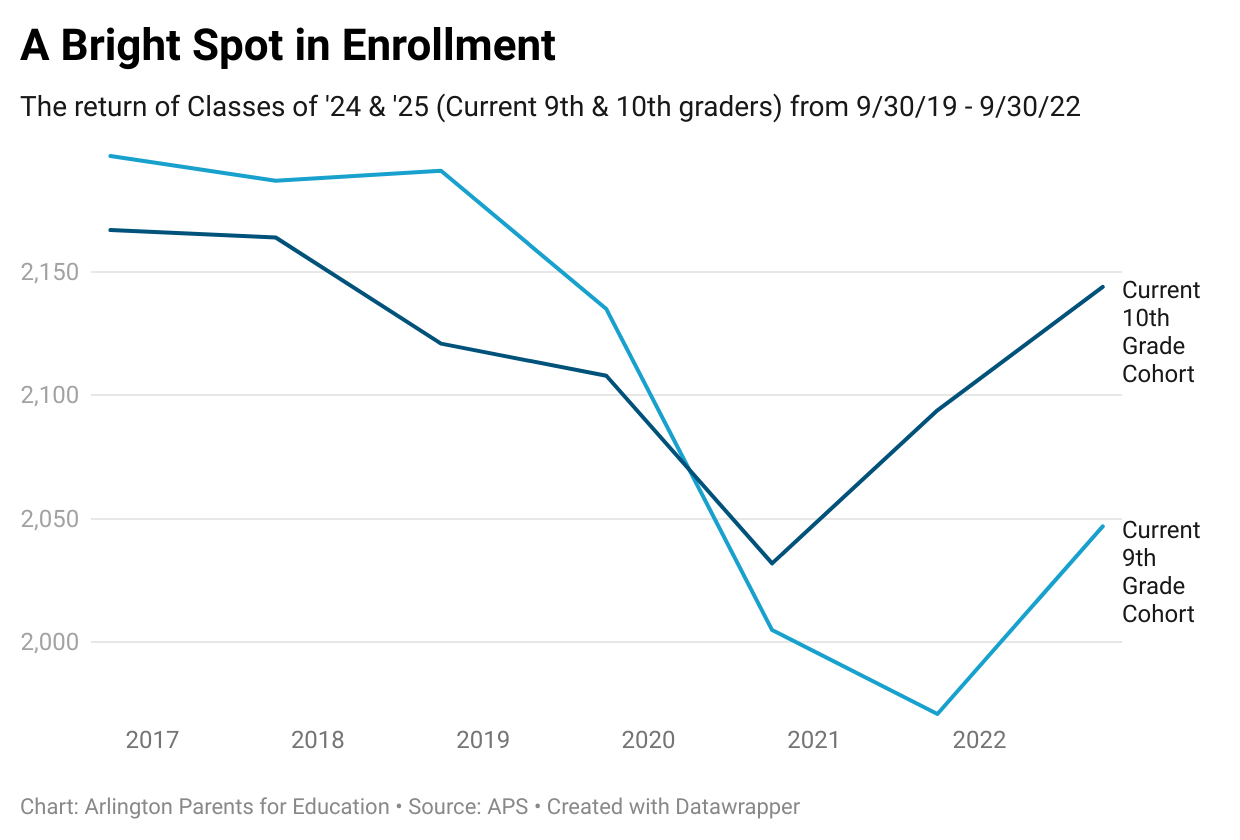Many APS Students Who Left During the Pandemic Still Not Returning
APS’ prolonged virtual instruction during the 2020-2021 school year appears to continue to have an adverse effect on enrollment. APS’ unenrollment, when adjusted for population growth, is consistent with other school districts nationally that were remote a similar length of time in the 2020-2021 school year. The results of the decision to remain virtual (fully remote then hybrid only) for a large percentage of the 2020-2021 school year seem to continue to not only negatively affect APS students academically, but also are reflected in the current student enrollment data.
Arlington Population Growth Masking Much of Reduced Enrollment
APS’ total enrollment at the beginning of this school year is still not back to where it was at the beginning of the 2019-2020 school year. Comparing Fall 2019 to Fall 2022 enrollment, enrollment has dropped 579 students or 2%. But adjusting the latest enrollment figures for organic growth from Arlington’s population growth (by deducting gains from much larger Kindergarten classes replacing smaller 12th grade classes), unenrollment during the same time period would be at least 1,100 students, or 4%.
As shown in the graph below, much of APS’ enrollment decline has been obscured by much larger Kindergarten classes, caused by Arlington’s population growth, replacing smaller 12th grade classes. For example, in Fall of 2013, the incoming Kindergarten class (of 2,139 students) was 55% greater than the outgoing 12th grade class (of 1,379 students). This differential in class sizes has been falling over time as the 12th grade classes increase as such larger earlier cohorts age through the APS system (hence, Dr. Barbara Kanninen’s comments at several meetings that APS has caught up with Arlington’s growth).
APS Adjusted Unenrollment Consistent with Other Most Remote US School Districts
A review of enrollment data from 48 states and the District Columbia found a direct correlation between the amount of time of remote schooling in the 2020-2021 school year vs. the amount of lost enrollment. Although K-12 enrollment nationally fell by 2.9% during the 2020-2022 school years (the largest in the history of U.S. public schooling), this unenrollment did not fall evenly on all school districts over the 2-year period:
Most remote school districts lost an average enrollment of 4.4%
Middle category of school districts lost an average enrollment of 2.3%
Most in-person category of school districts lost an average enrollment of 1.2%
APS likely falls into the most remote school district category, considering most APS elementary school students did not return in-person until March 2021, and then only were in-person 2-days per week with shortened school days – thereby receiving the equivalent of only 25 days in-person in the 2020-2021 school year. During the same 2-year period in the study, APS’ K-12 unenrollment, adjusted similarly as in the prior section, was 5%.
Unenrolled from Classes of 2026-2032 Largely Has Not Returned
Many of the APS kids who were in Grades K-6 at the beginning of the 2019-2020 school year that left still have not returned. The total reduced enrollment of these cohorts is 1,330 students. Assuming all of these children were to have returned by now, APS’ enrollment would be 28,771 (vs. 27,441 as of September 30, 2022). For comparison, APS’ maximum September 30 enrollment was 28,020 as of September 30, 2019.
These cohorts were in the grades for which virtual school was arguably the least effective. Moreover, they were in the grades with more local options for private school during that school year and the following school year (the enrollments of all of these cohorts except the Class of 2032 also decreased between June 30, 2021 and September 30, 2021).
Post-2019 Kindergarten and 1st Grade Classes Are Likely Underenrolled
Not factored into the adjusted APS unenrollment is that fact that APS unenrollment is likely to be even higher because this amount does not reduced enrollment in the K classes starting in September 2020.
Notably, the K classes in September 2020 and September 2021 grew 8% and 7%, respectively, when those cohorts entered 1st grade. Nonetheless, those 1st grade class sizes were still smaller than all pre-pandemic fall 1st grade classes for the past 10 school years.
It is unclear how much the K classes that entered in Fall 2020-2022 fully reflect their respective cohorts’ potential future enrollment. It will also be interesting to see if the K classes return to their September 2017-2019 range of enrollment in the future and, if not, those smaller entering K class cohorts see returns of enrollment after their K years.
Return of Classes of 2024 and 2025
One bright spot is the return of the now 9th and 10th grade cohorts, with the now 10th grade cohort having now exceeded its Fall 2019 enrollment. It will be interesting to see if the now 9th grade cohort sees a similar return to APS for 10th grade and if other cohorts see similar rates of students who left returning to APS when such classes enter their respective 9th and 10th grade years.
